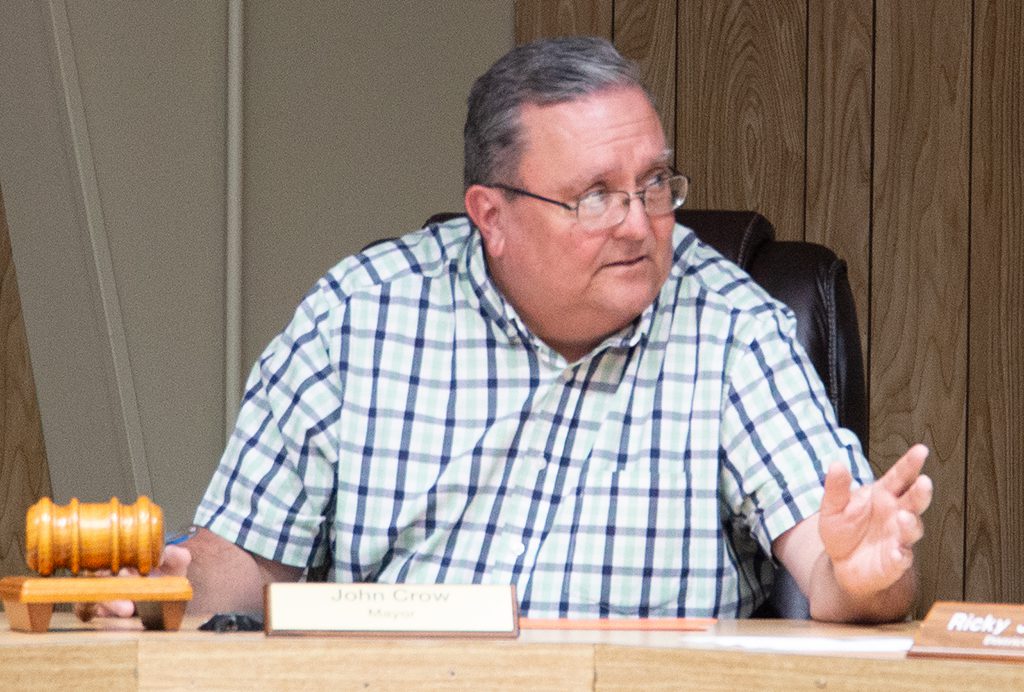
Planning, approval process will be lengthy, construction won’t begin for more than a year
By Luke Britt/Editor
The long-awaited Farmerville flood mitigation project first approved by the state in 2018 showed signs of progress this week when the Town Council gave Mayor John Crow authority to sign the contracts necessary to make the $4.8 million project a reality.
The project, funded entirely by block grants from the state Office of Community Development, actually is three projects that will unfold along similar timelines in three areas of town: Gulley Street, James Addition and along Highway 33 from Barron Road to Lake D’Arbonne.
The engineering firm supervising the projects, Meyer, Meyer, LaCroix & Hixson of Ruston (MMLH), provided the following descriptions of the scope of work for each project:
Hwy 33 Ditch Hardening – $2.2 million
This project will consist of construction of a combination of sub-surface and surface drainage improvements paralleling LA 33 from Barron Road south past Patti Street reducing the flooding risk of the area. Velocity and erosion control components will reduce water borne sediment and control siltation in Lake D’Arbonne with the intention of improving natural hydrology and the aquatic/floodplain habitat.
Gulley Street Drainage – $1.2 million
The project will include a combination of a lined channel section and riprap blanketing along the upper reaches of the Gulley Street drainage system in areas currently lacking proper drainage. Will incorporate a retention basin with a littoral shelf, essentially a miniature “wetland” that prevents erosion, improves water quality, and enhances native flora and fauna near Lake D’Arbonne. There will be similar channel improvements from the retention basin discharge to the lake.
James Addition Drainage – $1.4 million
The flood risk reduction project will include acquisition of an existing pond in the James Addition area for stormwater retention and conversion to recreational public use. Additional drainage improvements will be constructed within the subdivision to reduce flooding for events up to the 100-year frequency and lessen the frequency of flooding resulting in roadway/drainage system damage. Ditch channel sections will be lined or stabilized with rip rap blanketing in two areas and two additional ditch channels are proposed to be converted into bioswales for additional stormwater retention.
First approved in 2018, the projects are entirely funded by grants from the U.S. Department of Housing and Urban Development (HUD) as part of a $28 billion national flood mitigation program from which Louisiana was awarded $1.2 billion to dole out to local governments in the form of block grants. Every project, including Farmerville’s, required not only state approval but approval from HUD, which engineers said explains why it took so long for the projects to reach the starting line.

“Some things are worth the wait. This is going to save the town and the people of Farmerville a lot of heartache and money in terms of flood damage.”
Mayor John Crow
“Some things are worth the wait,” Mayor Crow said. “This is going to save the town and the people of Farmerville a lot of money and heartache in terms of flood damage,” Mayor Crow said. “Reduced flooding increases property values. The town will spend fewer taxpayer dollars making flood repairs, and over time the cost of flood insurance should go down.”
The projects are not out of the oversight woods, yet, according to Oliver Neal, senior project manager with MMLH. Neal said his firm is studying the drainage conditions in the project areas and will begin designing solutions based on what they learn.
“The state will have to review that study and any plans the come from it, before we move forward, and there will likely be other review points along the way,” Neal said.
The state Office of Community Development is overseeing more than 20 large-scale watershed projects statewide, he said, so quick resolutions to obstacles that arise may not be possible.
For this reason, Neal said it is difficult to predict when construction will begin, but early in 2025 is “probably a reasonable estimate.”
 fgazette.com Community news site for Union Parish Louisiana
fgazette.com Community news site for Union Parish Louisiana